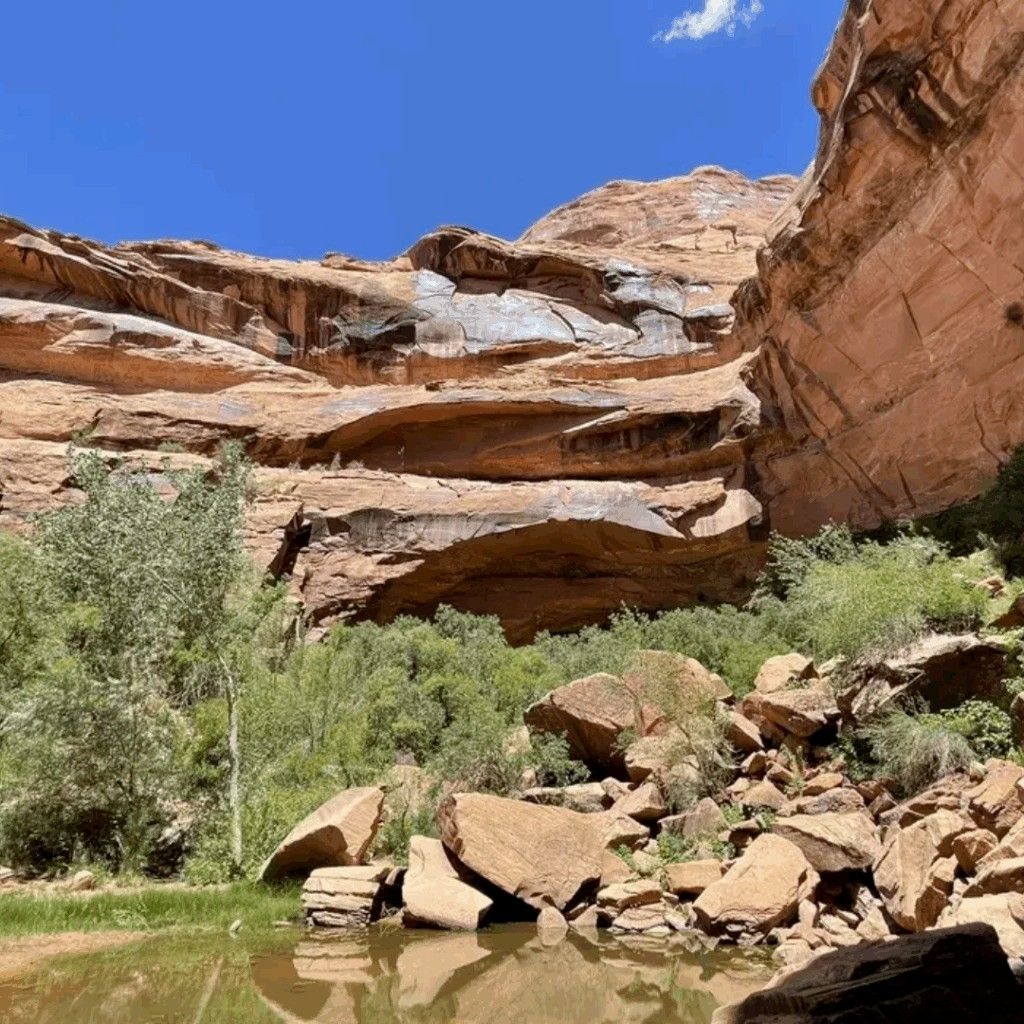
Ancient Petroglyphs: The mouth of Moonflower Canyon features an easily accessible panel of ancient Native American rock art (petroglyphs). These carvings date back to the Archaic and Formative periods, making the site an important cultural stop. Please do not touch or deface the rock art.
The "Indian Ladder": Tucked into a tall crevice near the petroglyph panel is a reconstructed log ladder, representing a method ancient inhabitants used to climb the sheer canyon walls.
Shady Oasis: The canyon is a welcome respite from the desert heat. It's filled with cottonwood trees and other lush vegetation, providing a rare and cool environment along a small stream (often dry or reduced to a small pool at the end).
Family-Friendly Hike: The short distance and gentle terrain make this an ideal hike for families with small children, leading to a small natural amphitheater (or "box canyon" terminus).
Access: The canyon and trailhead are located off Kane Creek Boulevard, southwest of Moab, and are easily reached by a standard passenger car.
Camping: The site is also a BLM recreation area and offers a small, primitive, walk-in campground.
Technical Route: Be aware that Moonflower Canyon is also a challenging, technical canyoneering route accessed from the top of the mesa (Moab Rim). This advanced route involves a mandatory 197-foot rappel and is completely separate from the easy hiking trail at the canyon bottom.
Cautions: The canyon floor near the creek is known to have patches of poison ivy, so be mindful of where you step, especially if the water level is high.